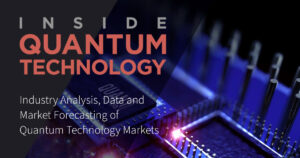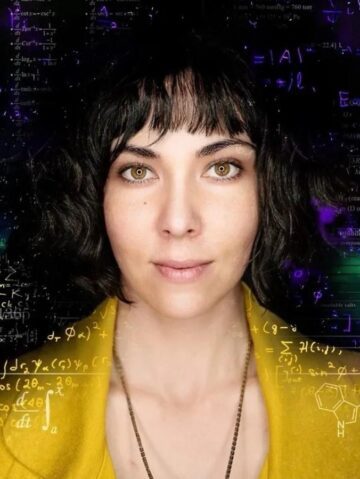A group of physicists within ParityQC and the University of Innsbruck– Anita Weidinger, Glen Bigan Mbeng and Wolfgang Lechner – have developed a novel strategy to mitigate errors in quantum computers, based on the ParityQC Architecture. Quantum News Briefs summarizes the announcement.
The paper outlining the invention has now been published in the journal Physical Review A, as an Editors’ Suggestion, highlighting research that is considered of particular interest, importance, or clarity. This new error mitigation technique exploits the redundant encoding of the ParityQC Architecture to successfully mitigate errors in quantum optimization algorithms. This promising solution aims to tackle the issue of hardware noise and errors which limit the performance of current quantum devices.
The authors demonstrate that with the ParityQC Architecture it is possible to efficiently mitigate errors in near-term algorithms. The proposed error mitigation approach is based on the ParityQC Architecture (also known as LHZ Architecture), a novel type of encoding that was discovered in 2015 and is now a patented technology of ParityQC. The Architecture uses a redundant encoding of logical variables to solve optimization problems on quantum chips. The physicists found that this redundancy can be exploited to mitigate errors in quantum optimization algorithms, specifically the Quantum Approximate Optimization Algorithm (QAOA).
The authors demonstrate the effectiveness of the proposed method by applying it to a set of benchmark problems. In the context of QAOA, the paper shows that errors can be significantly mitigated through this new approach, leading to an increased accuracy of the results. As stated by Wolfgang Lechner, co-founder and co-CEO of ParityQC and professor at the
University of Innsbruck: “This method can find meaningful applications in the real world to solve a wide range of optimization problems by significantly improving the performance of QAOA. This can close the gap between the imperfect and “noisy” near-term hardware and fully error-corrected codes.” Click here to read the original article in-entirety.
Riken researchers utilize machine learning for efficient quantum computer error correction
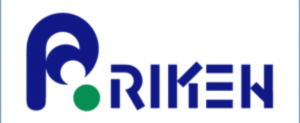
Researchers from the RIKEN Center for Quantum Computing have used machine learning to perform error correction for quantum computers—a crucial step for making these devices practical—using an autonomous correction system that despite being approximate, can efficiently determine how best to make the necessary corrections. Quantum News Briefs summarizes from September 7 Phys.org.
The main challenge towards putting quantum computers into practice stems from the extremely fragile nature of quantum superpositions. Indeed, tiny perturbations induced, for instance, by the ubiquitous presence of an environment give rise to errors that rapidly destroy quantum superpositions and, as a consequence, quantum computers lose their edge.
In this work, the researchers leveraged machine learning in a search for error correction schemes that minimize the device overhead while maintaining good error correcting performance. To this end, they focused on an autonomous approach to quantum error correction, where a cleverly designed, artificial environment replaces the necessity to perform frequent error-detecting measurements.
They also looked at “bosonic qubit encodings”, which are, for instance, available and utilized in some of the currently most promising and widespread quantum computing machines based on superconducting circuits.
The group found that a surprisingly simple, approximate qubit encoding could not only greatly reduce the device complexity compared to other proposed encodings, but also outperformed its competitors in terms of its capability to correct errors.
Yexiong Zeng, the first author of the paper, says, “Our work not only demonstrates the potential for deploying machine learning towards quantum error correction, but it may also bring us a step closer to the successful implementation of quantum error correction in experiments.” Click here to read complete September 7 article in Phys.org
Q-CTRL, Diraq partner to secure millions for three public-sector quantum projects
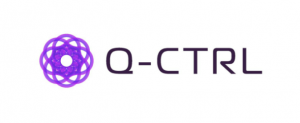
Q-CTRL, a global leader in developing useful quantum technologies through quantum control infrastructure software, and Diraq, a leading innovator in Silicon-based quantum computing, today announced they will be partnering on three multi-million-dollar projects to expand the commercial adoption of quantum computing. It represents the first stage of an anticipated partnership delivering new, high-impact quantum computing capabilities to the global market, from Australia.
The two Australian quantum technology companies will deliver three projects together: two from the NSW Office of the Chief Scientist and Engineer’s Quantum Computing Commercialisation Fund (QCCF) and one from the U.S. Army Research Office. Q-CTRL and Diraq are sharing responsibilities on the projects: Diraq will develop and provide access to its Silicon quantum computing hardware and Q-CTRL will build and integrate its quantum infrastructure software solutions to deliver maximum end-user value from the hardware.
Diraq is a world leader in building quantum processors using silicon ‘quantum dot’ technology, 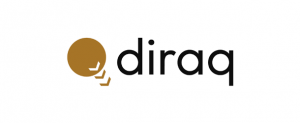 leveraging over two decades in engineering and research expertise at UNSW Sydney and backed by an extensive IP portfolio.
leveraging over two decades in engineering and research expertise at UNSW Sydney and backed by an extensive IP portfolio.
“The partnership between Diraq and Q-CTRL exemplifies our shared commitment to driving the next era of innovation in the quantum computing industry, both locally in Australia and globally,” said Diraq CEO and Founder, Andrew Dzurak. “We are delighted to collaborate with Q-CTRL, leveraging our specialised areas of expertise to jointly drive successful outcomes across these transformative projects.”
Australian companies and University teams have long engaged with the US Army Research Office in support of quantum computing capability development. In the current project led by Diraq, the two teams will focus on developing novel techniques to operate and optimize next-generation Silicon quantum processors. The ARO R&D program now aligns with quantum technology initiatives supported under the trilateral AUKUS agreement’s Pillar II. AUKUS Pillar II is aimed at enhancing capabilities and interoperability with a focus on cyber capabilities, AI, quantum technologies and undersea capabilities.
Sandra K. Helsel, Ph.D. has been researching and reporting on frontier technologies since 1990. She has her Ph.D. from the University of Arizona.
- SEO Powered Content & PR Distribution. Get Amplified Today.
- PlatoData.Network Vertical Generative Ai. Empower Yourself. Access Here.
- PlatoAiStream. Web3 Intelligence. Knowledge Amplified. Access Here.
- PlatoESG. Automotive / EVs, Carbon, CleanTech, Energy, Environment, Solar, Waste Management. Access Here.
- PlatoHealth. Biotech and Clinical Trials Intelligence. Access Here.
- ChartPrime. Elevate your Trading Game with ChartPrime. Access Here.
- BlockOffsets. Modernizing Environmental Offset Ownership. Access Here.
- Source: https://www.insidequantumtechnology.com/news-archive/quantum-news-briefs-september-12-novonix-and-sandboxaq-collaborate-on-breakthrough-ai-solutions-for-battery-technology-physicists-from-parityqc-and-the-university-of-innsbruck-develop-novel-quantum/
- :has
- :is
- :not
- :where
- 12
- 2015
- 7
- a
- access
- accuracy
- across
- Adoption
- AI
- aimed
- aims
- algorithm
- algorithms
- Aligns
- also
- an
- and
- Andrew
- announced
- Announcement
- Anticipated
- applications
- Applying
- approach
- approximate
- architecture
- ARE
- areas
- arizona
- Army
- article
- artificial
- AS
- At
- Australia
- Australian
- author
- authors
- autonomous
- available
- backed
- based
- battery
- BE
- been
- being
- Benchmark
- BEST
- between
- both
- breakthrough
- bring
- build
- Building
- but
- by
- CAN
- capabilities
- capability
- Center
- ceo
- CEO and Founder
- challenge
- chief
- Chips
- clarity
- Close
- closer
- Co-CEO
- Co-founder
- codes
- collaborate
- commercial
- commitment
- Companies
- compared
- competitors
- complete
- complexity
- computer
- computers
- computing
- considered
- context
- control
- correct
- Corrections
- could
- crucial
- Current
- Currently
- cyber
- decades
- delighted
- deliver
- delivering
- demonstrate
- demonstrates
- deploying
- designed
- Despite
- destroy
- Determine
- develop
- developed
- developing
- Development
- device
- Devices
- discovered
- drive
- driving
- Edge
- effectiveness
- efficient
- efficiently
- end
- engaged
- Engineering
- enhancing
- Environment
- Era
- error
- Errors
- exemplifies
- Expand
- experiments
- expertise
- exploited
- exploits
- extensive
- extremely
- Find
- First
- Focus
- focused
- For
- found
- founder
- frequent
- from
- Frontier
- fully
- fund
- gap
- Give
- Global
- global market
- Globally
- good
- greatly
- Group
- Hardware
- Have
- her
- here
- highlighting
- How
- HTML
- HTTPS
- ii
- implementation
- importance
- improving
- in
- increased
- indeed
- industry
- Infrastructure
- initiatives
- Innovation
- inside
- Inside Quantum Technology
- instance
- integrate
- interest
- Interoperability
- into
- Invention
- IP
- issue
- IT
- ITS
- journal
- known
- leader
- leading
- learning
- Led
- leveraged
- leveraging
- LIMIT
- locally
- logical
- Long
- looked
- lose
- machine
- machine learning
- Machines
- Main
- Maintaining
- make
- Making
- Market
- max-width
- maximum
- May..
- meaningful
- measurements
- method
- millions
- Mitigate
- mitigation
- more
- most
- Nature
- necessary
- necessity
- New
- news
- next
- next-generation
- Noise
- novel
- now
- of
- Office
- on
- ONE
- only
- operate
- optimization
- Optimize
- or
- original
- Other
- our
- outcomes
- outperformed
- over
- Paper
- particular
- partner
- partnering
- Partnership
- patented
- patented technology
- Perform
- performance
- Pillar
- plato
- Plato Data Intelligence
- PlatoData
- portfolio
- possible
- potential
- practice
- presence
- problems
- processors
- Professor
- Program
- project
- projects
- promising
- proposed
- provide
- public-sector
- published
- Putting
- Q-CTRL
- Quantum
- Quantum Computer
- quantum computers
- quantum computing
- quantum error correction
- quantum technology
- Qubit
- R&D
- range
- rapidly
- Read
- real
- real world
- reduce
- Reporting
- represents
- research
- researchers
- responsibilities
- Results
- review
- RIKEN
- Rise
- s
- Said
- SandboxAQ
- says
- schemes
- Scientist
- Search
- secure
- September
- set
- shared
- sharing
- she
- Shows
- significantly
- Silicon
- Simple
- since
- Software
- solution
- Solutions
- SOLVE
- some
- specialised
- specifically
- Stage
- stated
- stems
- Step
- Strategy
- successful
- Successfully
- superconducting
- support
- Supported
- sydney
- system
- tackle
- TAG
- teams
- techniques
- Technologies
- Technology
- technology companies
- terms
- that
- The
- The Projects
- their
- These
- they
- this
- three
- Through
- to
- today
- together
- towards
- transformative
- two
- type
- u.s.
- ubiquitous
- under
- university
- us
- us army
- used
- uses
- using
- utilize
- utilized
- value
- was
- which
- while
- wide
- Wide range
- widespread
- will
- with
- within
- Work
- world
- zephyrnet



